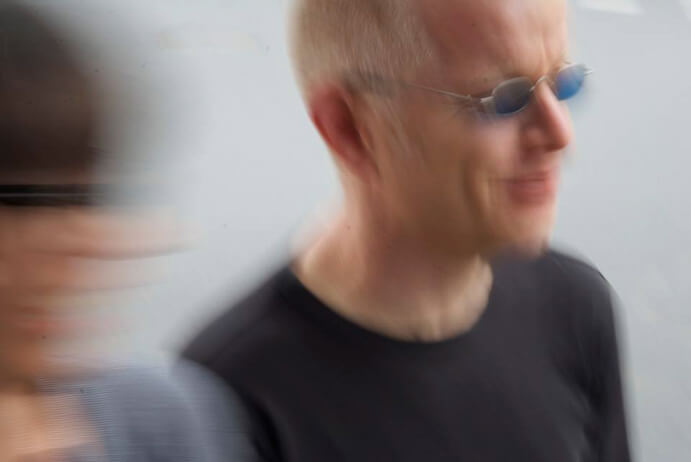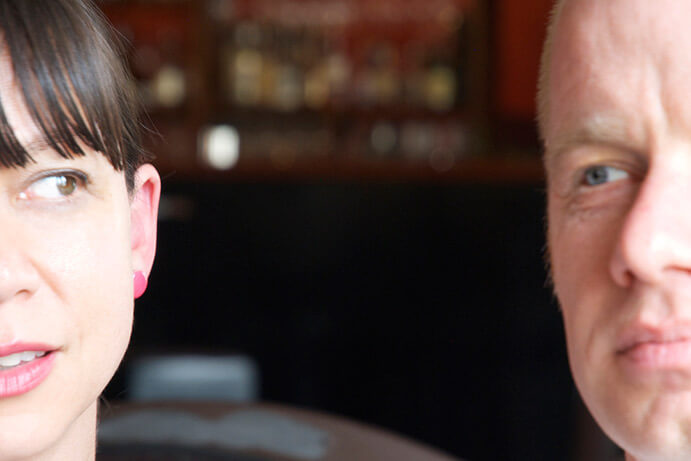The Australian contemporary music duo Tess Said So is the artistic collaboration of pianist Rasa Daukas and percussionist Will Larsen. These classically trained musicians assay the broad range of sounds their instruments can produce to craft their own unique music, full of surprises, as evidenced on their latest release, Scramble + Fate, on Preserved Sound records.
Scramble + Fate, is that a metaphor for how you create your music?
RD: We’re both from traditional music conservatorium backgrounds, graduating as performance majors, but coincidently we each chose non-classical paths straight out of music school: Will was signed to a record label and toured as a drummer in a very successful, ARIA-award-winning rock band and I worked for Sony/BMG in Sydney and Hong Kong representing international R&B, Hip Hop, Rock, and Pop artists. In a way this threw us out of our comfort zones as it was a clash with our classical training, giving us first hand exposure to the recording and production side of the industry. Ultimately this inspired us to question and want to take control of the entire creative process from the ground up.
WL: The writing process itself is very much influenced by jazz and pop; we experiment, improvise, and jam. Much of the process involves letting go of preconceptions to allow each other to breathe something new. In this context, we don’t know ahead of time what the emotions or imagery will be. The fun part is surprising each other with something unexpected and watching how the other reacts. When it comes to recording an album, we engineer, mix, and master everything ourselves. Even then, the music is not set in stone; we want the pieces to evolve in performances, whether by accident or design, so that in a year’s time they should be quite different to how they sound on the album.
How does your instrumentation — piano, percussion, electronics — affect the music you make?
WL: We love exploring the infinite possibilities of piano and percussion. Their sonorities compliment each other, both their registers are huge as are their tonal and dynamic ranges. There’s always a shifting of what’s grounding the sound in each piece — is it piano or is it percussion? When we’re looking at low registers, we often play around with the way you can feel fat frequencies as opposed to the high frequencies that come straight to your ear. We’re also interested in what happens after we play a note. Exploring the spaces between notes and allowing them to speak throws up interesting harmonics and dissonances.
RD: The electronics appear on several levels. Whether we’re using samples to add to the overall sonic palette or using it as a compositional device to construct piano and percussion around. On our new album Scramble + Fate, for some tracks like Mr. Jones, the electronics came first, with piano and percussion riffing over the top. In other pieces, the electronics are a subliminal reaction to something already in place.

Rasa Daukas and Will Larsen of Tess Said So
Are there choices you make in the studio that result in some of the unique sound of your recordings?
RD: How we place the instruments in the room and how we place the microphones are important to the experience we want the listener to have. Instead of the traditional concert recording experience, which assumes a definitive separation between the musicians on stage and the audience in their seats, we like to play with the spatial effect. The listener might feel that they’re right next to us, surrounded by the music, or even inside the instrument.
WL: The way we record is more similar to recording a pop album than a typical classical album. Very close mic’ing of all the instruments creates an experience for the listener as if a performer rather than a distant audience member. You can hear inside the piano, the mechanics of the keyboard action and the dampeners hitting the strings. You can hear the resonance of the strings not being played, vibrating in sympathy. You can hear texture in the percussion, how the colors and timbres change beyond the initial impact. It’s an experience we’re used to as performers, but it’s less obvious from an audience’s point of view. It’s a less perfect, more earthy sound.
How does collaborating wth other artists inform your work?
RD: Will and I started Tess Said So because we enjoy working with each other more than creating and performing just on our own. As well as with other musicians, we also love collaborating with artists from other disciplines. For example, we’re currently working with an artist who is creating a massive paper installation, where we will help to take it beyond the visual with the immersive impact of sound.
WL: Whenever we’ve worked with dancers, actors, or film, it’s always intriguing how our decisions about the music can influence the audience’s perception of how and what they should feel. Just as satisfying, is seeing how what is on stage or on screen influences and changes an audience’s perception of what our music is.
Tess Said So’s Dew Point music video with scenes from F.W. Murnaus’s Nosferatu
What can you tell us about upcoming projects?
RD: We’re excited about a big project that has just come onto our horizon, creating a live score for F.W. Murnau’s 1922 German silent film Nosferatu, eine Symphonie des Grauens (translated as Nosferatu: A Symphony of Horror). We’ve just started writing the music and we will perform it live at a showing of the film October 2, 2016, in Melbourne. The idea to write the full length feature score came about because of a music video we did for ‘Dew Point,’ a track off our first album that used footage from Nosferatu.
WL: The film is 94 minutes long, so not only is that a lot of music to write for a feature film, it will be a huge challenge to ensure our playing is in sync for the entire movie. Playing for that length of time non-stop will test our concentration and stamina too. Since this performance will be played before a film audience, we have the opportunity to expose people unfamiliar with new music to a new experience. It’s exciting to reach out to an audience that might not normally choose to go to a classical concert.




















